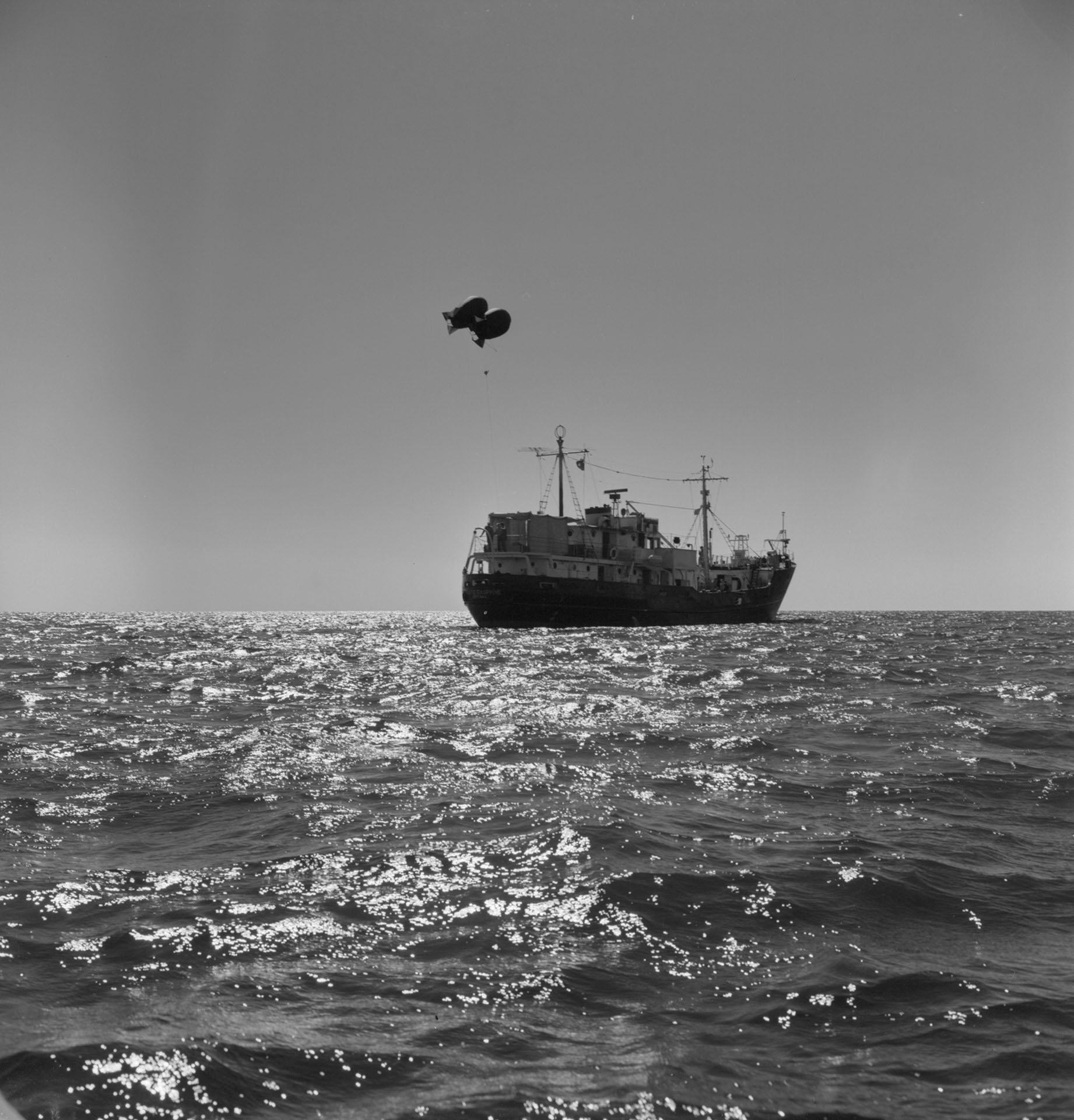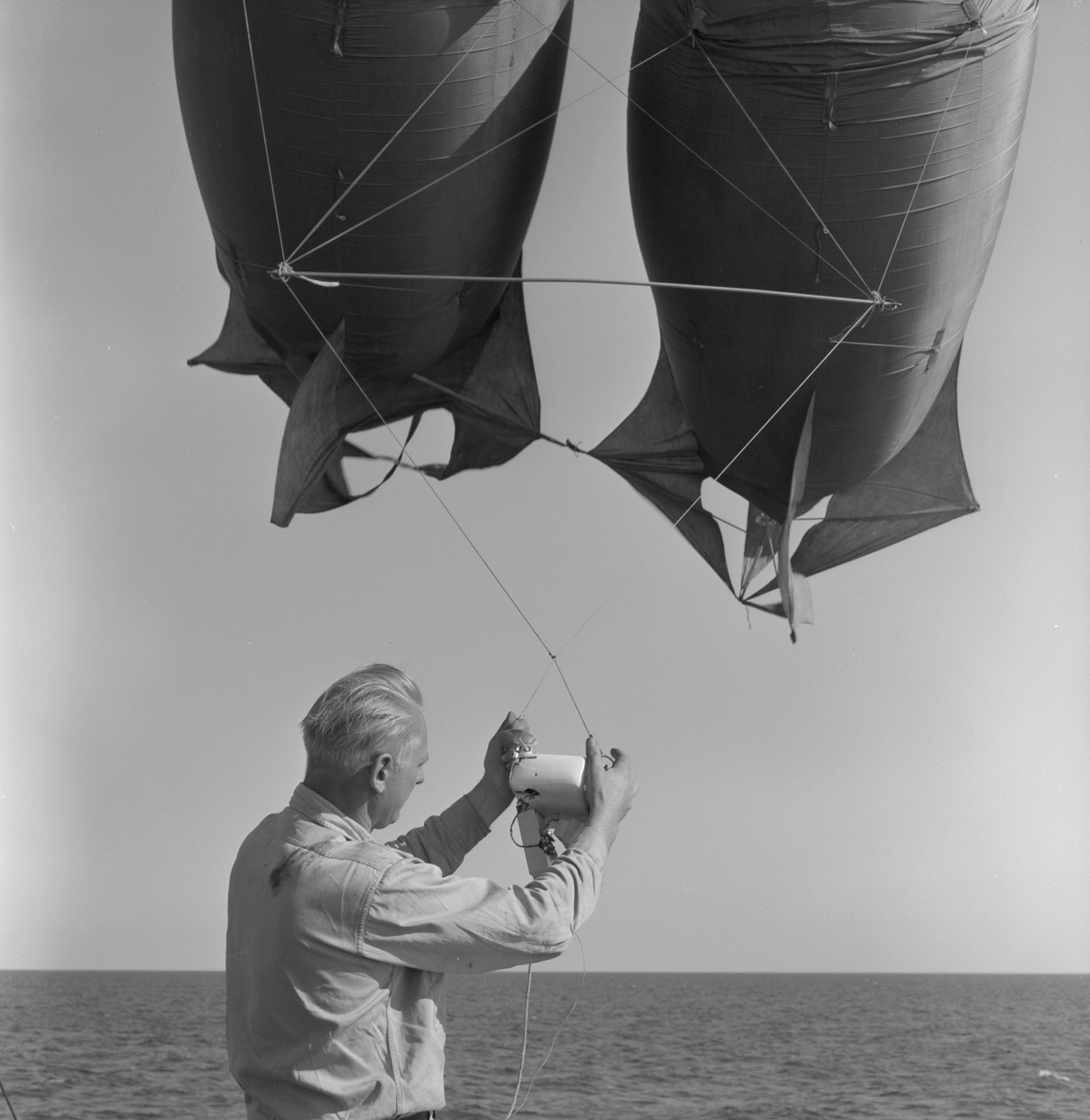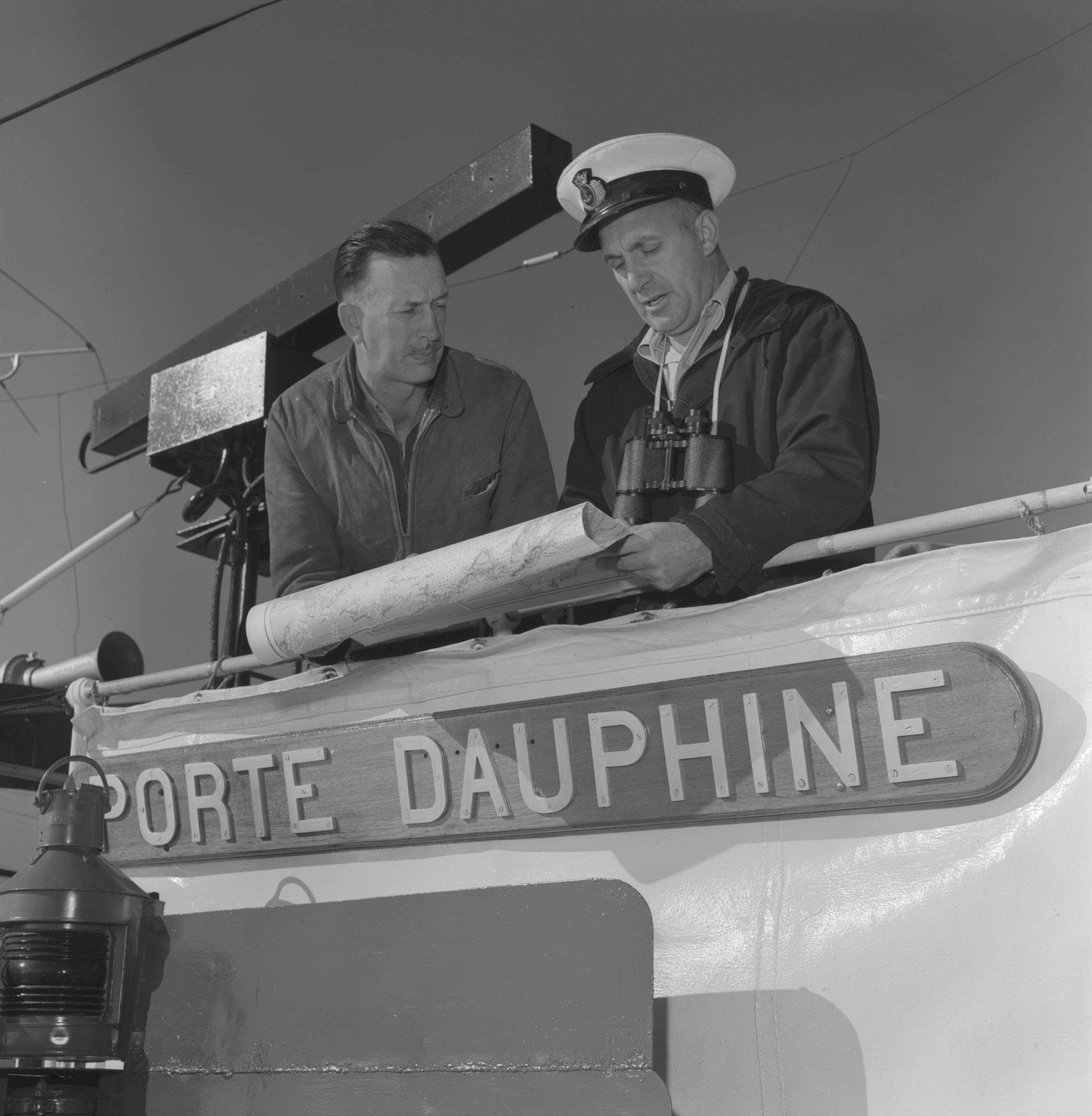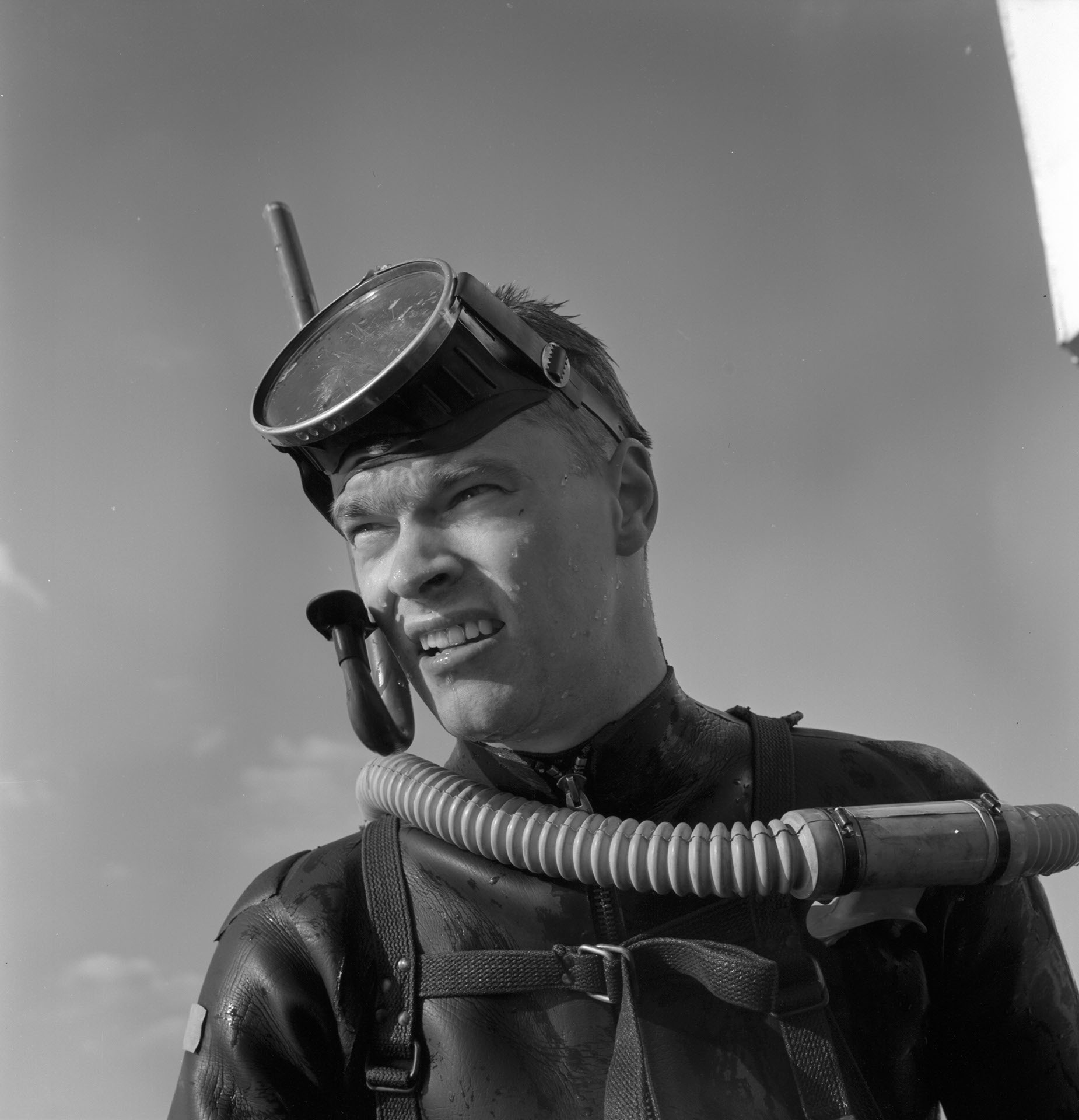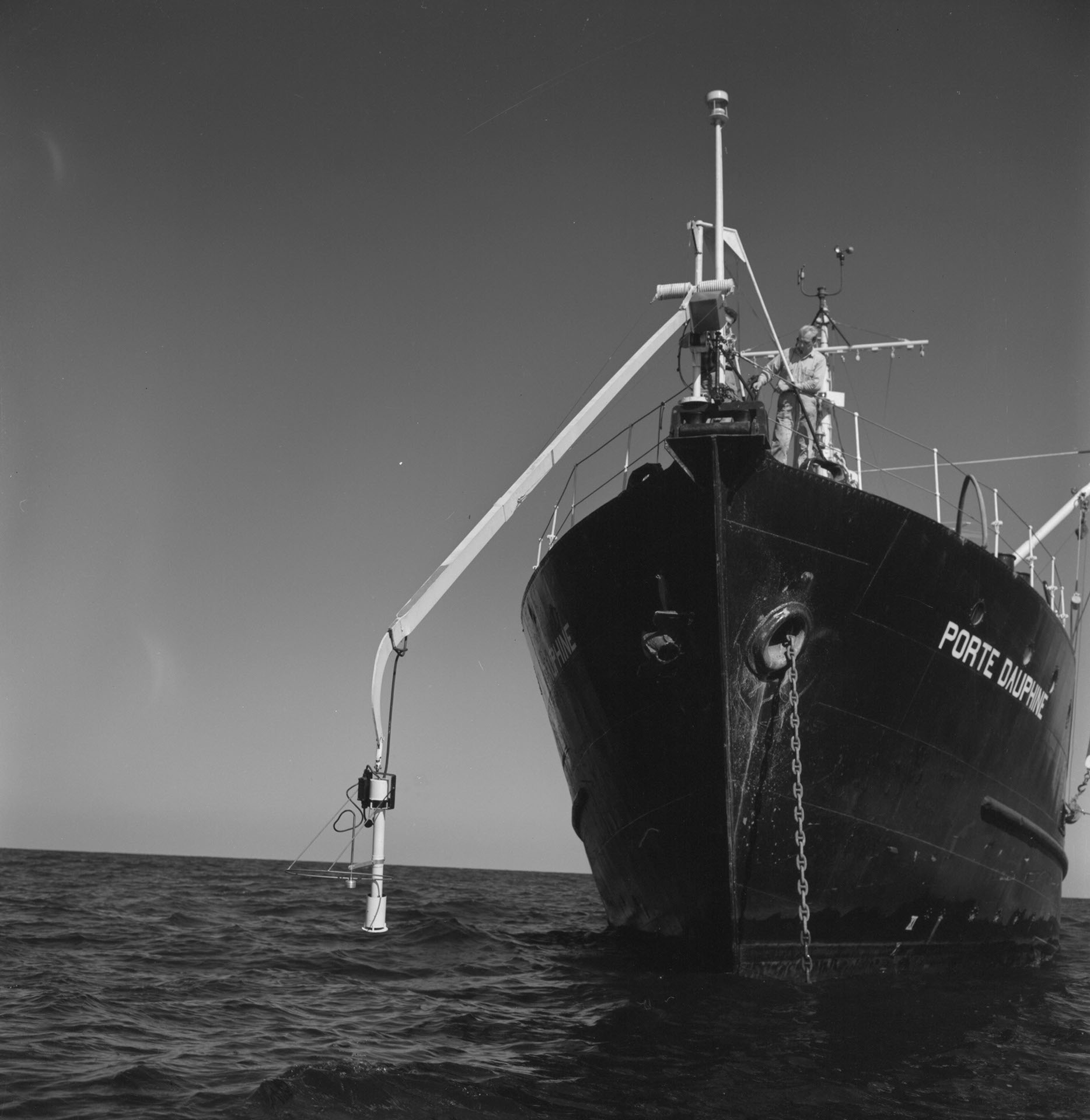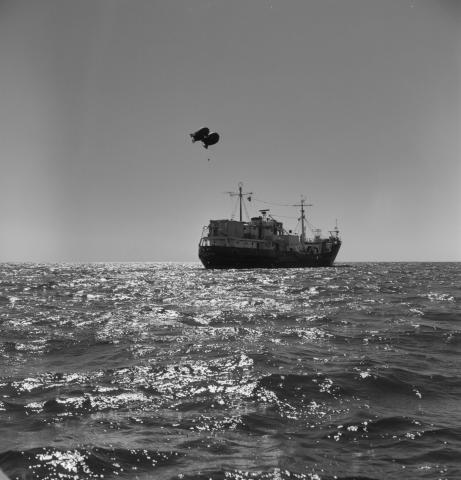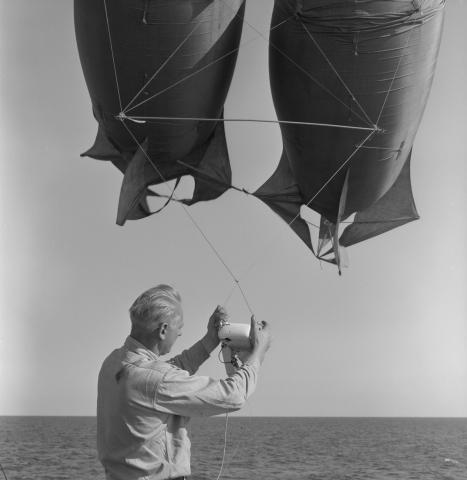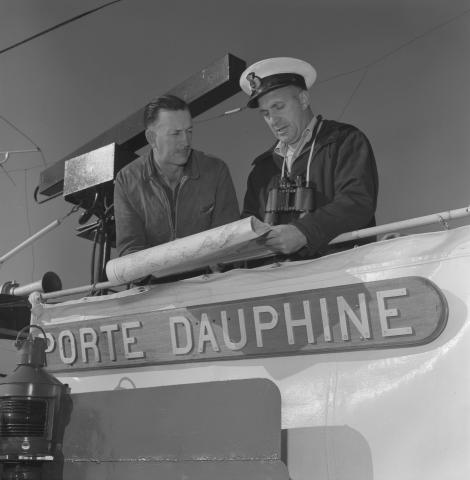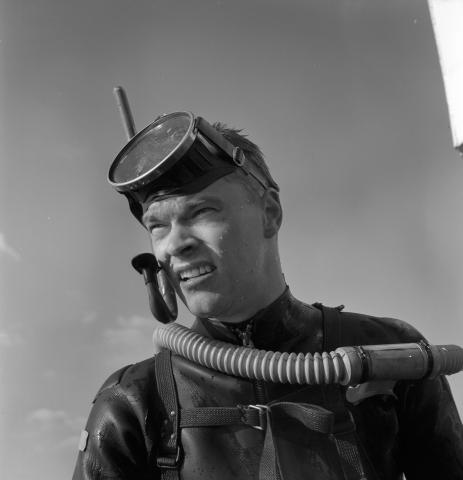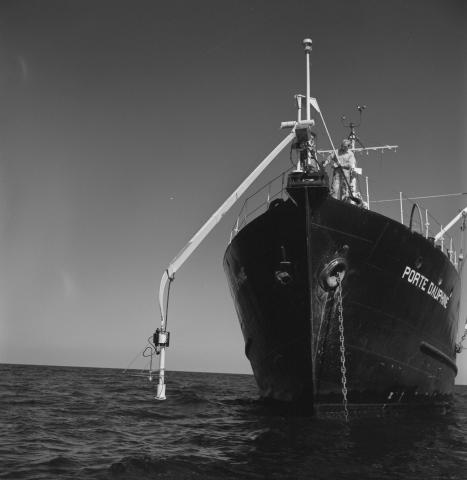
Photostory #310: Great Lakes Research Ship "Porte Dauphine" Keeps Busy: Safeguarding Canada's Most Valuable Mineral
Photographers
Maker
National Film Board of Canada
Release Date
May 1, 1962
Collection
CMCP fonds
Credit Line
Canadian Museum of Contemporary Photography fonds, National Gallery of Canada Library and Archives
Main Text
Stubby, twin balloons bob playfully in the breeze as they carry a compact package of meteorological instruments skyward. A string of thermometers and water samplers, lowered into the depths, is triggered by a brass-weight messenger sliding down the deep-sea wire. Fine-mesh plankton nets collect handfuls of micro-organisms. A heavy coring tube thuds deep into the lake bed, piercing through silt layers of the past 12,000 years. These operations and others, take place in the Great Lakes from a floating scientific-observation platform -- the Canadian Coast Guard Ship Porte Dauphine. The vessel is on loan to the Great Lakes Institute, formed by the University of Toronto in 1960. The Institute spurs research in the Great Lakes -- largest body of fresh water in the world -- provides training for graduate students in limnology and oceanography, co-ordinates research work between government agencies and universities. Under blue summer skies and in winter ice the Porte Dauphine carries scientists and technicians who probe physical-chemical-biological conditions and changes in the Great Lakes. In 1961 the ship stopped at nearly 2,000 pre-arranged observation points in lakes Ontario, Erie, Huron, Superior and Georgian Bay, logged a distance equal to a trip around the world, made over 26,000 observations. Results of this work include vital knowledge of a growing threat -- pollution. Blessed with more than half the world's fresh-water areas, Canada, especially southern Ontario, faces a growing shortage of this valuable mineral for industrial and economic needs -- a shortage accelerated by pollution. Investigations by the Porte Dauphine and similar ships in the future will combat this man-made problem, will be a prime factor in keeping Canada's fresh water pure.
Subjects:

